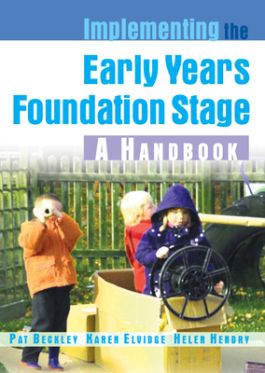Implementing the Early Years Foundation Stage: a Handbook
- Access the eBook anytime, anywhere: online or offline
- Create notes, flashcards and make annotations while you study
- Full searchable content: quickly find the answers you are looking for
Historical Perspective
Every Child Matters
The Early Years Foundation Stage
Research
Provision
Part One: A Unique Child
Chapter 1: Child Development
Chapter 2: Inclusive Practice
Chapter 3: Keeping Safe
Chapter 4: Health and Well-being
Part Two: Positive Relationships
Chapter 5: Respecting Each Other
Chapter 6: Parents as Partners
Chapter 7: Supporting Learning
Chapter 8: Key Person
Part Three: Enabling Environments
Chapter 9: Observation, Assessment and Planning
Chapter 10: Supporting Every Child
Chapter 11: The Learning Environment
Chapter 12: The Wider Context
Part Four: Learning and Development
Chapter 13: Play and Exploration
Chapter 14: Active Learning
Chapter 15: Creativity and Critical Thinking
Chapter 16: The Welfare Requirements
Part Five: Areas of Learning and Development
Chapter 17: Personal, Social and Emotional Development
Chapter 18: Communication, Language and Literacy
Chapter 19: Problem Solving, Reasoning and Numeracy
Chapter 20: Knowledge and Understanding of the World
Chapter 21: Creative Development
Chapter 22: Physical development
Conclusions
Further Reflections
Appendices
Glossary
Bibliography
Index
- Are you working or training to work in the early years sector?
- Would you like support and guidance in understanding the key themes in the Early Years Foundation Stage document?
- Are you looking for practical tips and strategies on how to implement EYFS in your setting?
Relating the themes from the EYFS document to everyday practice can be a daunting prospect for the busy practitioner. This timely resource offers friendly advice and suggestions on how you can apply the document’s strategies to your own setting.
Through practical activities and case studies, the authors provide you with straight forward guidelines for implementing the statutory requirements and developing your practice. The book covers the main outline of the document, providing a discussion for the themes and rational as well as making links to current research, theory and practice.
Each chapter includes:
- An introduction to the theme
- Practical suggestions and activities
- Reflective tasks
- Case studies of good practice

